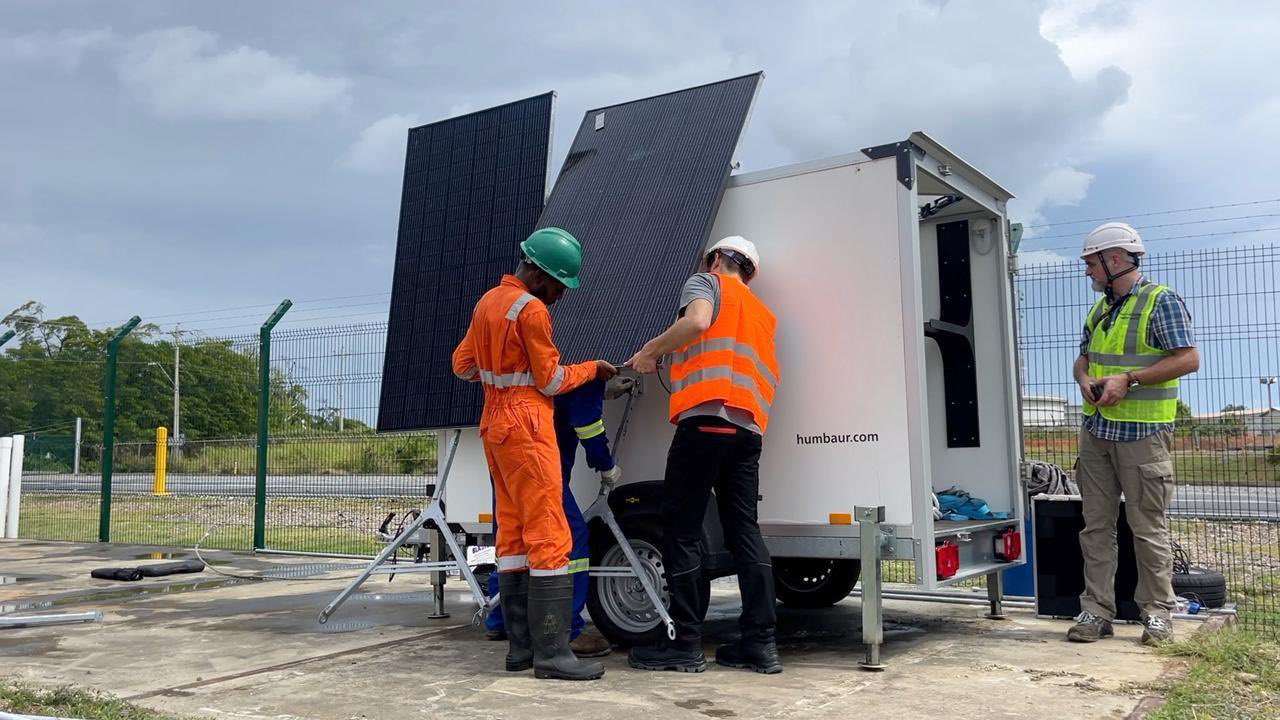Trinidad and Tobago’s Ministry of Energy and Energy Industries (MEEI) has announced the successful deployment of Light Detection and Ranging devices (LiDARs) at Orange Valley and Galeota. These devices will collect wind data to international standards over a 12–18-month period as part of the onshore Wind Resource Assessment Programme (WRAP). This initiative represents the first official step toward wind energy deployment in Trinidad and Tobago.
The LiDAR deployment, which took place from November 19-20, 2024, is the result of coordinated efforts by the MEEI, the Trinidad and Tobago Electricity Commission (T&TEC), and the National Energy Corporation, which is the WRAP Project Implementation Agency. The process is supported by a consultancy from the European Union (EU), secured by the Government of the Republic of Trinidad and Tobago in October 2024, to provide technical expertise for the WRAP.
Stuart Young, Minister of Energy and Energy Industries said the deployment as a pivotal event for the country’s energy future. He said, “The steps we have taken just this week alone have been momentous for renewable energy, we are actively pursuing our 30% ‘Renewable Generation’ target, and wind energy will be the source of power for our future Green Hydrogen Industry.”
The Minister also announced plans to extend the onshore WRAP to three additional sites in 2025, as part of efforts to attract investors and project developers. This initiative is guided by the Cabinet-appointed Wind Energy Steering Committee (WESC), chaired by the MEEI. Formed in April 2024, the WESC coordinates efforts across various agencies to execute the WRAP and advance Trinidad and Tobago’s wind energy goals.
The LiDAR sites, Orange Valley and Galeota, were chosen based on the findings of the 2023 Strategy for the Development of Wind Energy in Trinidad and Tobago. This strategy, a collaborative effort between the Trinidad government and the EU Delegation to Trinidad and Tobago, identified a potential of approximately 2.75 gigawatts (GW) of onshore wind energy and 32 GW offshore. Nine onshore areas of interest were highlighted, with Orange Valley and Galeota ranking highest for wind energy potential.
On November 21, 2024, the MEEI, National Energy, and the EU hosted a stakeholder workshop to chart the path forward for utility-scale wind deployment. These discussions will contribute to an actionable plan for Trinidad’s wind energy development.
Aside from wind, Trinidad is pursuing solar energy as part of its transition. Presently, electricity generation is based on natural gas.



